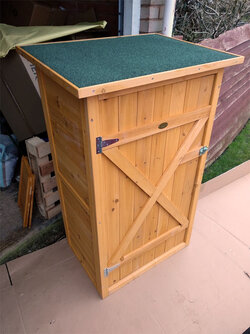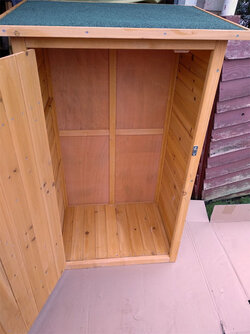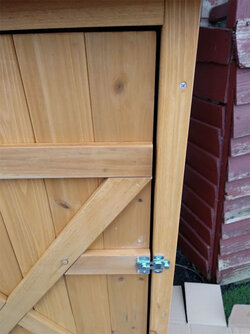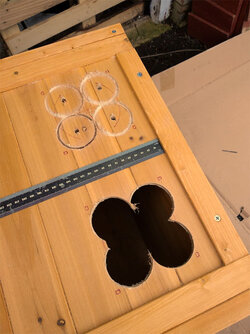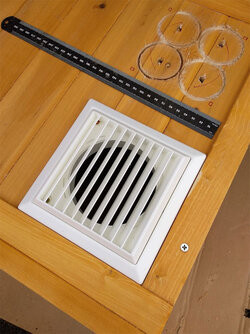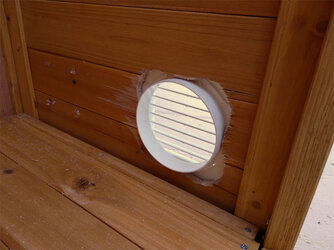- Joined
- Mar 7, 2008
My airflow question in the other thread seem to have got some interest and I can now reveal my plans as major parts have arrived.

This is the "case", or will be once it is suitably modified. Yes, it's a wooden outdoor storage thing. The aim of this is to have somewhere to put some of my compute resource where I can dump the heat without burning up my house. Reviews of this seem mixed, so my first stage will be to assemble it and evaluate it for its strength and water resistance. I'll add a seal around the door as necessary. I will raise it so it wont sit directly on the ground.
I do have white outdoor paint already on hand from past house decorating which will improve water resistance, and may help to reflect sunlight also.
I have thoughts on getting power to it already, although networking is more open for now.

And these are the vents I've got. The aperture is about 100mm across, and you can see a coarse mesh filter in there. I will add a finer filter elsewhere on the intakes only. I will reuse existing 120 or 140mm fans, will decide once I get a chance to see how it fits in practice. As not indoors I can likely run them flat out.
I estimate the above could be about a weekends worth of work between other things, so not planning on getting a system in there immediately.
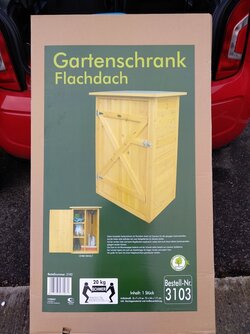
This is the "case", or will be once it is suitably modified. Yes, it's a wooden outdoor storage thing. The aim of this is to have somewhere to put some of my compute resource where I can dump the heat without burning up my house. Reviews of this seem mixed, so my first stage will be to assemble it and evaluate it for its strength and water resistance. I'll add a seal around the door as necessary. I will raise it so it wont sit directly on the ground.
I do have white outdoor paint already on hand from past house decorating which will improve water resistance, and may help to reflect sunlight also.
I have thoughts on getting power to it already, although networking is more open for now.
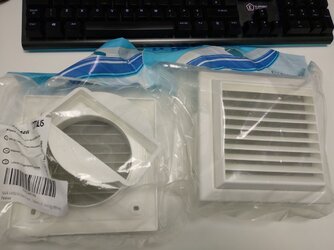
And these are the vents I've got. The aperture is about 100mm across, and you can see a coarse mesh filter in there. I will add a finer filter elsewhere on the intakes only. I will reuse existing 120 or 140mm fans, will decide once I get a chance to see how it fits in practice. As not indoors I can likely run them flat out.
I estimate the above could be about a weekends worth of work between other things, so not planning on getting a system in there immediately.
